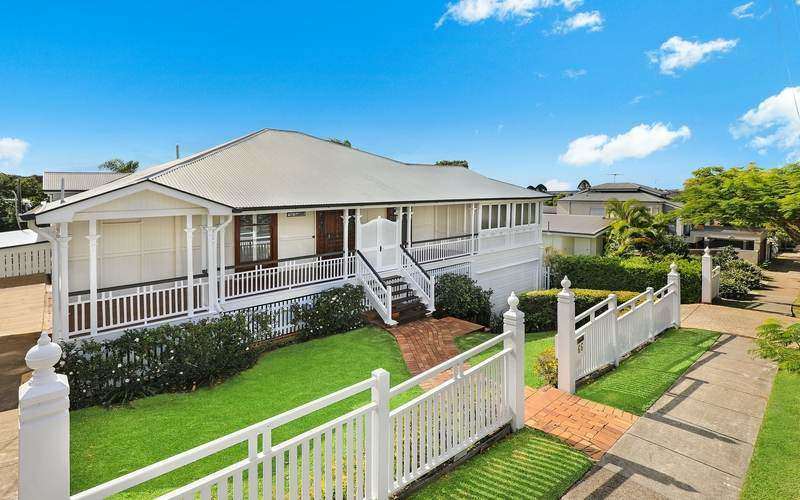Almost one-million Australians have deferred their loan repayments during the pandemic, but in the coming months, the option to keep those payments paused is likely to come to an end for many.
While Australian banks have come out and said they’ll offer extensions on this program for those who need it, those who don’t will have to start making full mortgage repayments again. But as we'll explain in this article, doing so could be beneficial.
Let’s take a look at:
- What mortgage holidays/deferrals are
- What the banks have said about mortgage deferrals
- The case for resuming your mortgage repayments
- The case against resuming your mortgage repayments
- The case for refinancing your mortgage
Mortgage holidays explained
In March, right as the coronavirus pandemic was getting real, the Australian Banking Association (ABA), together with a number of large and smaller banks, announced a coronavirus support package worth more than $100 billion that included a six-month deferral of loan repayments, also known as mortgage freezes or ‘holidays’. It’s likely you knew this already, as around 800,000 Australians have deferred their repayments since the start of the pandemic, totalling $260 billion in home loans - you might be one of them.
These mortgage holidays were necessary for many, as rampant unemployment or the temporary closing of businesses severely hampered the ability of many to repay their mortgages, which can easily cost a couple of thousand dollars a month. For some, the likes of JobKeeper or the increased rate of JobSeeker weren’t enough to maintain their regular repayments, and without the option to defer, hundreds and thousands would’ve end up defaulting on their mortgages, which would’ve not only been disastrous for the banking industry but the economy as a whole.
[Read: The pros and cons of deferring mortgage repayments].
A few months on, and the economy is beginning to reopen, meaning many who initially froze their mortgage repayments may now no longer need to do so.
Banks ‘encourage’ customers to start paying their mortgage again
In July, the ABA announced a further four-month extension to these mortgage holidays for those who need them, taking the maximum allowed mortgage deferral to January 2021.
However, it also urged borrowers who were able to do so to resume their normal repayment as quickly as possible, while also offering partial repayments to those still experiencing some level of financial difficulty.
“Those who are able to repay their loans will resume doing so, which is in the best interests of those customers and allows support to be directed to those who need it," ABA Chief Executive Anna Bligh said.
"Encouragingly, many customers have already chosen to resume making repayments.
Aussie banks are continuing their support, with 4 month extensions to existing deferrals: https://t.co/2wZQmYBQ5S pic.twitter.com/b00amftgfy
— Australian Banking (@ausbanking) July 8, 2020
The banks have been singing the same tune. Westpac acting chief financial officer Gary Thursby urged customers to consider restarting payments when possible, while NAB chief executive Ross McEwan said it had already been checking in with customers to understand their circumstances and help them accordingly.
But the key question is: Is it actually a good idea to resume your mortgage repayments as soon as you can? Or should you wait until that September 30 deadline?
We’ll go through the pros and cons of each below.
The case for resuming your mortgage repayments
Quite a few people have already followed the ABA’s advice and have resumed their repayments, at least partially if not permanently. As reported in The Australian in early June, 20% of Commbank customers who originally requested deferrals were now making some contributions, while 10-15% of NAB’s affected customers have done the same.
Meanwhile, data released by large non-bank lender Firstmac shows the percentage of its mortgage-holders on fully or partially suspended repayments dropped to 5.37% at June 30 from 5.65% on May 31.
According to Firstmac managing director Kim Cannon, the number of new hardship applications across its business has fallen from over 150 per day in March to one per day in June.
“Over the past two weeks, our hardship team has been contacting affected customers to check on their circumstances and we have been pleasantly surprised to find that a lot are choosing to resume normal repayments because their situation has improved,” Mr Cannon said.
The case for resuming your mortgage repayments is two fold:
-
Mortgage holidays still accrue interest; and
-
The sooner you can pay off your home loan the better
Mortgage holidays still accrue interest
The main problem with mortgage holidays is that, although they can provide some short-term relief, interest is still carrying on the principal loan amount, thanks to interest capitalisation. The component of the loan that gets frozen is the principal part - the amount you’ve borrowed - but you still need to repay the interest bit, which can end up costing you a few thousand extra dollars overall.
To use an example, lets say you have a mortgage balance of $250,000 with an interest rate of 2.80% p.a. over 25 years. Before the pandemic hit, your minimum monthly repayments was $1,170 and you managed to get the loan balance down to $230,000. However, if you needed to defer the repayments for six months, interest still accrues although your repayments temporarily go to $0.
By the end of the six-month deferral you’d owe an extra $2,943 on this loan overall, meaning you actually owe almost $233,000 now, instead of $230,000. By unfreezing your mortgage repayments earlier, say after three months, you’d cut the extra interest you owe. But the longer your deferral goes on for, the bigger your overall loan balance will be.
The sooner you can pay off your home loan the better
Your home loan will probably be the biggest debt you’ll have over your lifetime, and a rule of thumb is the longer you’re paying it off, the more expensive it will be. Therefore it stands to reason that a home loan paid off sooner will be cheaper overall. If you can afford to start repaying your home loan now, but choose not to, then that’s a few months extra added to the loan term, which could cost you a few extra hundred or even a few extra thousand dollars.
In a similar vein, increasing your repayments above the minimum required amount can also help you pay off your loan faster and save you interest.
You may also save and pay off your home loan faster by making more frequent repayments, which you can do by contacting your lender and adjusting your repayment schedule.
Every little bit counts, especially if you’re looking at having to pay a couple of extra thousand dollars.
Many experts advise it
Mortgage Choice CEO Susan Mitchell says you should start repaying your home loan again ASAP.
“If you can afford to make your home loan repayments, you absolutely should continue to pay them down,” Ms Mitchell told Savings.com.au.
Consumer groups CHOICE, Financial Rights Legal Centre, Consumer Action Law Centre and Financial Counselling Australia were also supportive of the banks' announcements that customers should endeavour to resume normal repayments.
In a joint statement, these groups said if you can afford to resume payments, even at a reduced amount, the earlier you can do that the better. They also recommended talking to a free and independent financial counsellor by ringing the National Debt Helpline on 1800 007 007 if you need help, as well as contacting your bank and being open about your financial position.
On the other hand, they were also supportive of the banks offering customers the chance to extend their mortgage holidays, as there is a case for continuing them.
We’ll look at why you might consider doing so below.
The case against resuming your mortgage repayments
The obvious reason against resuming your home loan repayments (either partially or fully) is that you simply can’t afford to do so yet.
Australia’s effective unemployment rate (which includes those out of work and those who have opted against looking for work as the economy contracts) is currently sitting at 13.3%. Jobs and hours worked have massively declined during COVID-19, and with more outbreaks popping up across Victoria and New South Wales (at the time of writing that is), there’s a possibility that more people will be out of work again and will lack money to pay for both their home loan and the essentials.
According to NAB, a borrower with a $400,000 mortgage on their standard variable home loan rate would free up an extra $1,834 per month, or $11,006 over six months, which could be extremely useful to pay for all of life’s essentials during COVID, like:
-
Food
-
Medicine
-
Fuel & Transport
-
Bills
If you’re out of work during COVID-19 (and are maybe one of the people who’s fallen though the JobKeeper/JobSeeker cracks), then paying a few extra thousand over several decades could easily be worth doing if it means you can get by now during a crisis.
Extending your original deferral
There’s now the option of an additional four-month deferral, taking that September 30 deadline to a new one of January 31 for those who are still struggling. These will be offered on a case-by-case basis, and won’t be automatic, so if you don’t get in touch with your bank then you can expect to have your normal repayments resume.
According to the ABA:
“Customers with reduced incomes and ongoing financial difficulty due to COVID-19 may be eligible for a further deferral period of up to four months, during which time they will be expected to work with their bank to find the best solution to assist them to return to repayments through a restructure or variation to their loans.”
Extendng your deferral by another four months will obviously lead to even more interest being accrued too, but this might just have to be a cost you’ll have to accept in the long-run.
What if you still can’t meet your repayments?
If February 2021 has come around and you’re still unable to meet your home loan repayments, you’ll need to take proactive steps to contact your bank to figure out other arrangements. The ABA said banks will work with customers to find the best options to restructure or vary their loan. Options may include:
-
Extending the length of the loan
-
Converting to interest-only payments for a period of time
-
Consolidating debt
-
A combination of these and other measures.
You can also request a Hardship Variation from your bank, which they must respond to within 21 days.
According to Ms Mitchell, the worst thing you can do in this situation is to sit on your hands.
“You need to speak to your lender or mortgage broker as soon as possible,” she said.
“If you miss paying just one scheduled home loan repayment, without notifying your lender, this gets reported to credit reporting agencies.
“Late or overdue payments appear on your credit report and may impact your creditworthiness and borrowing capacity in future.”
CHOICE, Financial Rights Legal Centre, Consumer Action Law Centre and Financial Counselling Australia have also called on banks to recognise that there will be large groups of people who are still financially affected beyond January, and these people will need longer term and more flexible hardship arrangements.
Don’t forget to look at switching your home loan
Despite all the doom and gloom going around at the moment, now, surprisingly, could be the optimal time to refinance your home loan to a cheaper one. The latest figures from the Australian Bureau of Statistics (ABS) from May show the value of existing owner occupier home loans refinanced with a different lender was over $10 billion, which is by far the biggest on record and up 27.5% from April’s $7.9 billion, which was also a record high.
Refinancing was almost at the same level as the value of new home loan lending, which fell by almost 12% in the same month, so there’s clearly a refinancing craze going on as people look to take advantage of record-low interest rates.
Housing finance commitments for refinances have gone absolutely gang-busters over the past few months as people scramble for a better deal or look at ways to keep their homes pic.twitter.com/wyKQ1KeJuM
— Cameron Kusher (@cmkusher) July 9, 2020
There can be big savings in refinancing your home loan, and this could be beneficial for people in both situations:
-
If you’re able to resume mortgage repayments, then you could save even more by picking a loan with lower minimum repayments
-
If your repayments are currently paused, you might be able to resume payments by switching to a much cheaper home loan, especially if you’re currently paying a “loyalty tax” by staying with the same lender for several years. However, many lenders would be unlikely to approve a refinance for a customer that’s currently experiencing hardship.
Ms Mitchell said she “cannot stress enough” how now is a good time to look for a better deal on your home loan.
“This is the most home loan competitive environment in history. If you haven’t had your home loan reviewed in the last two years, you may be paying too much,” Ms Mitchell told Savings.com.au.
“I’d urge any borrower in this position to speak to a mortgage broker to discuss their options.
“It could be as simple as negotiating a better rate with your existing lender and if they are not willing to offer you a better deal, your broker can do all the legwork to help you refinance your loan with another lender.”
Many home loan lenders have been slashing interest rates lately, particularly fixed rates. According to comments from Ms Mitchell earlier in July, the economic climate and abundance of extremely low rates resulted in a huge number of borrowers fixing their home loan.
"Mortgage Choice data shows that 33% of borrowers opted to fix either part or all of their home loan interest rate in the month of June, up from the three month average of 14%,” she said.
Savings.com.au’s two cents
If you can afford to do so, consider repaying your mortgage by as much as you can, or at least think about resuming your minimum repayments while putting your spare funds in an offset account. Conversely, consider speaking to your lender if you can’t. There are other options available than just paying $0, and every little bit that you can reasonably pay towards your mortgage could be more beneficial than paying nothing.
And remember to keep your eyes and ears peeled for good home loan deals, as there are more of them around in this present low-rate, uber-competitive market. You could shop around for a good deal or speak to a mortgage broker if need be. While you’re here, check out some of the lowest rate fixed and variable home loans on the market.

Ready, Set, Buy!
Learn everything you need to know about buying property – from choosing the right property and home loan, to the purchasing process, tips to save money and more!
With bonus Q&A sheet and Crossword!



 Bernadette Lunas
Bernadette Lunas
 Denise Raward
Denise Raward
 Harry O'Sullivan
Harry O'Sullivan
 Jacob Cocciolone
Jacob Cocciolone
 William Jolly
William Jolly

